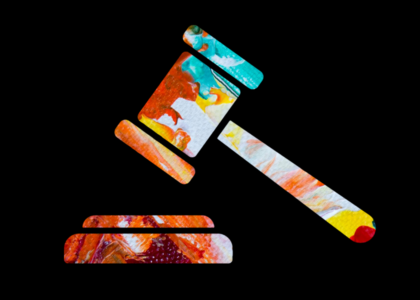Welcome back! With the upcoming election stirring the air, I hope this note offers you a moment of calm and grounding amidst the buzz.
In our last note, we learned how to cultivate Awareness, helping us tune into our day-to-day experiences with greater clarity.
Today, let’s take that understanding a step further by learning to recognize and transform negative judgment into curiosity.
As you begin to truly observe the present moment, something interesting unfolds: you start to notice your own sense of satisfaction or dissatisfaction—your judgment—toward what is happening.
“In each of us, there’s a judge and there’s the person being judged.”
— Thich Nhat Hanh
Reining in your inner judge can profoundly transform the quality of your experience and give you greater creative control over your reality.
Understanding Judgment
We are all painfully familiar with judgment.
“That’s not good enough.”
“You should’ve known better.”
“Too slow.”
You may encounter these little stings from outside sources, but more often than not, they come from our own internal monologue.
Judgment isn’t inherently bad—in fact, it’s essential. It helps us make sense of the world and choose what we want. However, we often default to negative judgment without realizing it.
This tendency can be a protective mechanism, wired to help us avoid risk and discomfort. But when it dominates, it clouds our perceptions, making it nearly impossible for us to have true discernment of the full picture.
The most powerful step you can take to gain greater power over your experience is recognizing when you’re judging something as negative or undesirable. This discernment can let you pause, reflect, and potentially choose a different perspective, reshaping your experience in real-time.
How Do I Re-Pattern My Judgment?
You go after its foundation.
Start by asking, “What am I feeling?”
If you get a negative response, you’re onto something. Negative emotions are like alarm bells, warning us that judgment is present.
When you feel frustration, disappointment, or irritation, it often stems from expectations you hold about how things “should” be. These emotions highlight moments where your internal judge has deemed something undesirable.
At this point, you’re likely asking, “Great. So, I’m frustrated, disappointed, and upset. Now what?”
Now, we challenge judgment by shaking its foundation.
The foundation of Judgment is the fallacy of Knowing.
Negative judgment is built on knowing some version of, “This sucks.”
…knowing, this is taking way too long.
…knowing, this is not where I want to be.
…knowing, I am doing a terrible job.
To build a new foundation, we get to introduce more than one possibility as the reason for each event. This is the introduction of Curiosity.
Replace Judgment With Curiosity
Throughout our lives, we have been taught the importance of knowing things.
It’s important to know…
What our competitors are working on.
When our taxes are due.
Who is picking the kids up from school today.
The list of things to know is endless.
But, we are never taught how to not know.
We don’t need to know…
How horrible the weather is.
What an awful person she is.
What a miserable day it’s been.
These “knowings” are nothing more than judgments that fuel negative emotions. To un-know them, replace them with Curiosity. 🙂
Curiosity is an open, imaginative state that invites us to explore rather than conclude. It shifts our perspective from fixed judgments to questions that uncover depth and meaning.
We might start to wonder…
“What can I do to enjoy this weather?”
“What might be contributing to her rough edges?”
“How can I make this day just a little bit better?”
Curiosity helps us engage with life in a way that is more open, compassionate, and creative—transforming how we experience the world around us.
Make It Practical: Try it in Traffic
The simplest place to test this Judgment vs. Curiosity lesson is in traffic. 😉
Next time you’re driving, remember how easy it is to rush to negative judgments about other drivers.
Imagine someone tailgating you, clearly agitated, and your first instinct is to think, “What’s wrong with this person?”… or worse.
Instead of letting that knee-jerk ‘knowing’ take over, try shifting it.
Ask yourself, “What reasonable explanation could there be for this person’s behavior?”
Maybe they’re in pain, dealing with a kidney stone.
Maybe they’re trying to calm a screaming child in the backseat.
Maybe they’re rushing to be with a loved one in labor.
…Or maybe they’re simply super anxious and distracted.
By making this simple shift, you can empathize with the other driver instead of staying frustrated, turning a moment of annoyance into one of understanding.
Practice this regularly, and you’ll strengthen your Curiosity muscle. This habit will quickly spill over into other areas of your life, helping you approach more situations with openness and less Judgment.
Next Up:
If you’ve made it this far, I’d love to hear your feedback on this more conversational format. We’re going to keep experimenting and staying curious about what you, as a reader, find most useful. 🥰
Next time, we get to ask: Now that we understand what judgment is, and how to meet it with curiosity, what makes us want the moment to be different in the first place?? 😉
I hope this sparked some ideas for you as we head into a pretty intense week. If we can each come to the table with even an ounce more empathy and a little less ‘knowing,’ I know we can all help each other lighten the load.
More soon.
